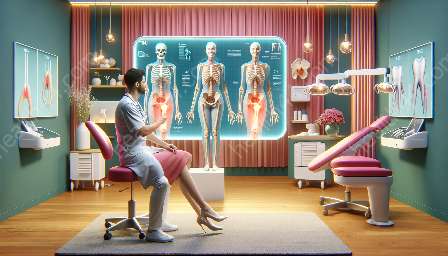Temporomandibular joint disorder (TMJ) is a condition that affects the jaw joint and surrounding muscles. Physical therapy plays a crucial role in managing TMJ, and a proper assessment is vital for effective treatment. This comprehensive guide covers various diagnostic techniques for TMJ assessment, their importance, and their compatibility with physical therapy for TMJ management.
TMJ Assessment Overview
During TMJ assessment, healthcare professionals use a combination of clinical evaluation, imaging techniques, and diagnostic tests to identify the underlying causes and severity of the condition. This assessment is essential for developing personalized physical therapy programs to improve TMJ symptoms and restore jaw function.
Diagnostic Techniques for TMJ Assessment
1. Clinical Examination: A thorough physical examination of the temporomandibular joint, including range of motion, muscle strength, and joint stability, helps in evaluating TMJ function and identifying areas of dysfunction. This clinical assessment provides valuable insights into the patient's symptoms and guides the selection of appropriate physical therapy interventions.
2. Imaging Studies: Diagnostic imaging, such as X-rays, computed tomography (CT) scans, and magnetic resonance imaging (MRI), allows for detailed visualization of the TMJ structures, including the joint, surrounding tissues, and any anatomical abnormalities. These imaging modalities help in confirming the diagnosis, assessing the extent of damage, and planning targeted physical therapy approaches.
3. Electromyography (EMG): EMG is a valuable tool for evaluating the electrical activity of the jaw muscles during different movements. It provides quantitative data on muscle function and helps in identifying muscle imbalances, asymmetries, and abnormalities, which contribute to TMJ dysfunction. This information guides the development of specific physical therapy exercises to address muscle-related issues.
4. Joint Vibration Analysis (JVA): JVA is a non-invasive diagnostic technique that measures the vibrations produced by the temporomandibular joint during jaw movements. It aids in detecting joint abnormalities, such as disc displacement or degeneration, and provides valuable information for planning targeted manual therapy and neuromuscular re-education in physical therapy.
5. Bite Analysis: Assessing the occlusion and bite relationship helps in understanding how the teeth come together during function. Abnormal bite patterns and malocclusions can contribute to TMJ dysfunction, and incorporating bite analysis into the diagnostic process enables physical therapists to address these issues through orthotic therapy and functional training.
Integration with Physical Therapy for TMJ
The diagnostic information obtained from these techniques plays a crucial role in tailoring individualized physical therapy interventions for TMJ management. Physical therapists utilize a combination of modalities, exercises, and manual techniques to address the specific impairments identified during the assessment process.
Manual therapy techniques, including soft tissue mobilization, joint mobilization, and myofascial release, aim to improve joint mobility and reduce muscle tension, addressing the findings from the clinical examination and EMG assessment. Exercise programs focus on improving flexibility, strength, and control of the jaw muscles, utilizing the data from EMG and bite analysis to target specific muscle imbalances and functional limitations.
Furthermore, orthotic therapy, based on the results of JVA and bite analysis, can be used to optimize the positioning of the jaw and provide support during functional activities. Patient education on posture, ergonomics, and self-management strategies is also tailored based on the diagnostic findings to empower individuals in managing their TMJ symptoms and preventing further dysfunction.
Conclusion
Understanding the various diagnostic techniques for TMJ assessment and their compatibility with physical therapy interventions is essential for promoting effective management of temporomandibular joint disorder. By integrating comprehensive assessments with evidence-based physical therapy approaches, healthcare professionals can optimize treatment outcomes and empower individuals to achieve improved TMJ function and quality of life.


